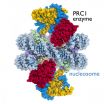(Press-News.org) Research suggesting air pollutants released by unconventional oil and gas production are well over recommended levels in the US is published today in the open access journal Environmental Health. High levels of benzene, hydrogen sulfide and formaldehyde were found. The study is the first to be based on community sampling by people who live near production sites and could be used to supplement official air-quality monitoring programs.
Unconventional oil and gas come from reserves that do not readily flow to the surface. This is because they are either distributed throughout rocks with low permeability or, as in the case of shale gas, trapped by the sedimentary rock shale. They are usually extracted using techniques such as vertical or horizontal drilling and hydraulic fracturing.
Previous studies have focused on contamination of ground and surface water, with very few looking at air pollution or air quality. Work on air quality has either focused on regional sources of air pollutants or gathered data from one or a limited number of production sites averaged over a long period of time.
In this research, residents were trained to take 'grab air' samples and collected 35 samples at 11 sites across five states in the US: Wyoming, Arkansas, Pennsylvania, Colorado and Ohio. They were asked to take samples during periods of heavy industrial activity on site or when feeling acute health symptoms such as headache, nausea or dizziness. In addition, 41 passive tests were set up to monitor for formaldehyde near production facilities or compressor sites. All collected samples were logged and sent to a lab for analysis.
Lead researcher, David O. Carpenter from the University at Albany in New York, said: "We explored air quality at a previously neglected scale: near a range of unconventional oil and gas development and production sites that are the focus of community concern. Residents conducted sampling in response to operational conditions, odor events, and a history of the onset of acute symptoms."
A total of 16 of the 35 grab sample sites and 14 of 41 passive formaldehyde tests exceeded minimal risk levels set out by the US Agency for Toxic Substances and Disease Registry and the US Environmental Protection Agency Integrated Risk Information System. The three chemicals most commonly found to exceed recommended levels and which are linked to increased risk of diseases were benzene, hydrogen sulfide and formaldehyde.
The air samples that exceeded recommended levels of benzene were found to range from 35 to 770,000 times higher than background levels. The concentrations were up to 33 times the benzene concentration one gets when pumping gasoline into your car. The exposure one would get in five minutes at one Wyoming site is equivalent to that you would get living in Los Angeles for two years or Beijing for eight and half months. For the samples with higher than recommended levels of hydrogen sulfide, the results ranged from 90 to 60,000 times higher than background levels, all above the odor threshold (smell of rotten eggs), according to the US Occupational Safety and Health Administration (OSHA). OSHA reports that these concentrations would cause eye and respiratory tract irritation after 1 hour of exposure, accompanied by fatigue, loss of appetite, headache, irritability, poor memory and dizziness. Formaldehyde levels in the 14 samples that were outside federal guidelines were 30-240 times higher than background levels. This is more than twice the formaldehyde concentration that occurs in rooms where medical students are dissecting human cadavers, and where most students report respiratory irritation. Both benzene and formaldehyde cause cancer, but cancer takes a long time to develop and won't appear for years.
The study is limited by the number of samples taken in each state and the fact that samples were taken at only a very few of the thousands of unconventional oil and gas sites. They also reflect sampling at one point in time for all measurements but for formaldehyde. So these results are more a worst-case concentration than an average over long periods of time.
David Carpenter said: "Community-based monitoring near unconventional oil and gas operations has found dangerous elevations in concentration of hazardous air pollutants under a range of circumstances. In this study we have shown that community-based research can improve air-quality data while adhering to established methods. Our findings can be used to inform and calibrate state monitoring and research programs."
INFORMATION:
Media Contact
Ruth Francis
Head of Communications
BioMed Central
T: +44 (0)20 3192 2737
M: +44 (0)78 2528 7546
E: Ruth.Francis@biomedcentral.com
Notes to editor:
1. Research article
Air concentrations of volatile compounds near oil and gas production: A community-based exploratory study
Gregg P. Macey, Ruth Breech, Mark Chernaik, Caroline Cox, Denny Larson, Deb Thomas and David O. Carpenter
Environmental Health 2014, 13:82
During embargo, please contact Ruth Francis for a copy of the paper.
After embargo, article available at journal website here:
http://www.ehjournal.net/content/13/1/82/abstract
Please name the journal in any story you write. If you are writing for the web, please link to the article. All articles are available free of charge, according to BioMed Central's open access policy.
2. Environmental Health publishes manuscripts on all aspects of environmental and occupational medicine and related studies in toxicology and epidemiology.
Environmental Health is aimed at scientists and practitioners in all areas of environmental science where human health and well-being are involved, either directly or indirectly. Environmental Health is a public health journal serving the public health community and scientists working on matters of public health interest and importance pertaining to the environment.
3. BioMed Central is an STM (Science, Technology and Medicine) publisher which has pioneered the open access publishing model. All peer-reviewed research articles published by BioMed Central are made immediately and freely accessible online, and are licensed to allow redistribution and reuse. BioMed Central is part of Springer Science+Business Media, a leading global publisher in the STM sector. http://www.biomedcentral.com
Air quality and unconventional oil and gas sites
2014-10-30
ELSE PRESS RELEASES FROM THIS DATE:
Frailty increases kidney transplant recipients' risk of dying prematurely
2014-10-30
Regardless of age, frailty is a strong risk factor for dying prematurely after a kidney transplant. The finding, which comes from a new study published in the American Journal of Transplantation, suggests that patients should be screened for frailty prior to kidney transplantation, and that those who are identified as frail should be closely monitored after the procedure.
It's very difficult for physicians to identify which patients with kidney disease will not do well after receiving a kidney transplant. Even the best models are able to correctly discriminate patients ...
Report: 93 percent of mining, oil & gas, logging, agriculture developments involve inhabited land
2014-10-30
LIMA, PERU (30 October, 2014)—In an analysis of almost 73,000 concessions in eight tropical forested countries, more than 93 percent of these developments were found to involve land inhabited by Indigenous Peoples and local communities. According to the research, conducted by The Munden Project, the total amount of land handed over by governments to the private sector for mining, logging, oil & gas drilling, and large-scale agriculture includes at least 40 percent of Peru and 30 percent of Indonesia.
"When governments sell the land, forests and other natural resources ...
More attention to measles, vaccine experts urge
2014-10-29
Doctors and public health authorities need to renew their attention to measles, researchers from Emory Vaccine Center urge in an editorial in the New England Journal of Medicine.
"Because of its high level of contagiousness, measles is the indicator disease for weaknesses of an immunization program," write Walter Orenstein, MD, and Katherine Seib, MSPH.
Orenstein is associate director of the Emory Vaccine Center and professor of medicine at Emory University School of Medicine, and Seib is research manager in Emory's Division of Infectious Diseases.
Measles is one ...
Survival rates in pediatric umbilical cord transplants may indicate a new standard of care
2014-10-29
MINNEAPOLIS-ST. PAUL (October 29, 2014) – A new standard of care for children facing acute myeloid leukemia (AML) may be clear, following a multi-year study published in the latest edition of the New England Journal of Medicine.
The research, led by John Wagner, Jr., M.D., director of the Pediatric Blood and Marrow Transplantation program at the University of Minnesota and a researcher in the Masonic Cancer Center, University of Minnesota, compared outcomes in children with acute leukemia and myelodysplastic syndrome who received transplants of either one or two ...
First detailed picture of a cancer-related cell enzyme in action on a chromosome unit
2014-10-29
A landmark study to be published in the October 30, 2014 print edition of the journal Nature provides new insight into the function of an enzyme related to the BRCA1 breast-cancer protein. The study by a team at Penn State University is the first to produce a detailed working image of an enzyme in the Polycomb Repressive Complex 1 (PRC1) -- a group that regulates cell development and is associated with many types of cancer.
Enzymes like PRC1 turn on or turn off the activity of genes in a cell by manipulating individual chromosome units called nucleosomes. "The nucleosome ...
Strong bonds with pets may help foster resiliency in military-connected children
2014-10-29
NORTH GRAFTON, Mass. Developing resiliency has important benefits for children, especially those from military families faced with significant challenges such as parental deployment and frequent moves. New research published online in Applied Developmental Science supports the idea that, along with other key resources, strong attachments to animals may help military-connected children develop resiliency and other positive developmental traits.
"We were interested in seeing if the specific stressors faced by military-connected families could be mitigated by interacting ...
'Treasure in saliva' may reveal deadly diseases early enough to treat them
2014-10-29
UCLA research could lead to a simple saliva test capable of diagnosing — at an early stage — diabetes and cancer, and perhaps neurological disorders and autoimmune diseases.
The study, the most comprehensive analysis ever conducted of RNA molecules in human saliva, reveals that saliva contains many of the same disease-revealing molecules that are contained in blood. It was published online today by the peer-reviewed journal Clinical Chemistry and will be published in the journal's January 2015 special print issue, "Molecular Diagnostics: A Revolution in Progress."
"If ...
Plump turtles swim better: First models of swimming animals
2014-10-29
MADISON, Wis. — Bigger is better, if you're a leatherback sea turtle.
For the first time, researchers at the University of Wisconsin-Madison, Florida Atlantic University (FAU), and the National Oceanic and Atmospheric Administration (NOAA) have measured the forces that act on a swimming animal and the energy the animal must expend to move through the water.
A surprising finding: Longer, slender turtles are less efficient swimmers than more rotund turtles, which get better stroke for their buck.
By taking these measurements, the research team — led by UW-Madison's ...
UBC researchers aim to simplify life saving drug
2014-10-29
Heparin, the life saving blood thinner used in major surgeries and treatment of heart diseases, is a complicated drug but a research team from the University of British Columbia has set out to make its use a lot safer by developing a universal antidote.
Heparin's blood thinning action often requires an antidote to reverse its effect before serious bleeding issues arise especially in the case of major surgical procedures.
Finding an approved drug to reverse the blood thinning effect of heparin is complicated because there are about a dozen approved heparin products ...
Brain responses to disgusting images help reveal political leanings
2014-10-29
Maggot infestations, rotting carcasses, unidentifiable gunk in the kitchen sink – how much your brain responds to disgusting images could predict whether you are liberal or conservative.
In a study to be published in an upcoming issue of Current Biology, an international team of scientists led by Virginia Tech reports that the strength of a person's reaction to repulsive images can forecast their political ideology.
"Disgusting images generate neural responses that are highly predictive of political orientation even when those neural responses don't correspond ...



